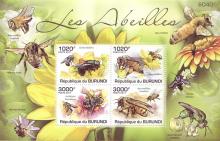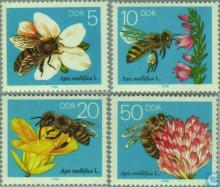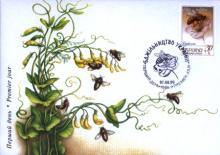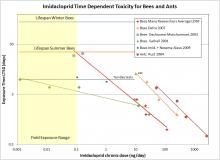Kamerbrief van staatssecretaris Dijksma over neonicotinoiden en bijen
Geachte Voorzitter, Hierbij informeer ik u ten eerste over de stand van zaken van het Europees besluitvormingsproces inzake het verbod op neonicotinoïden. Ten tweede ga ik in op de openbaarheid van gegevens in gewasbeschermingsmiddelendossiers en geef vervolgens mijn reactie op het onderzoeksrapport over vertrouwelijke studies over imidacloprid en bijen dat in opdracht van Natuur & Milieu is gemaakt. Dit naar aanleiding van uw verzoeken van 10 en 11 april 2013. Tenslotte informeer ik u over de monitoring van wintersterfte bij bijen. In een reactie schrijft de toxicoloog Henk Tennekes dat staatssecretaris Dijksma behendig laveert tussen de LTO visie (die een beperkte inperking van de toepassingen van een aantal neonicotinoiden in een Europees verband nastreeft) en die van haar eigen partij, de PvdA (die de motie Ouwehand steunde en zich daarmee uitsprak voor een Europees moratorium op alle toepassingen van alle neonicotinoiden). Daarbij verliest ze haar eigenlijke taak, namelijk in te grijpen om grote milieuschade te voorkomen, uit het oog, aldus Tennekes. De belangenorganisatie voor de Nederlandse agrochemische industrie Nefyto betreurt het besluit van de Europese Commissie voor het instellen van een 2-jarig moratorium op toepassingen van 3 neonicotinoïden. De basis voor de industrie om verantwoord investeringen te doen in nieuwe land- en tuinbouwmethoden wordt hierdoor aangetast (bijlage).










